
I wonder …
Do I simply call this a book? Or would it be more accurate to call it an unexpected trove of treasure I have discovered by the Grace of God?
But to be prosaic for a moment, this is of course, a book – which functions like an overarching compendium on three distinct themes.
First and most obviously, there is the theme of nine great Vatican approved modern Marian Apparitions beginning with Guadalupe in 1531 and continuing through France and Belgium, Ireland and of course, Fatima … (As the book dates from 2002, the most recent approved apparition – that of Saint-Étienne-le-Laus again in France – is not treated here).
Secondly the book delves into the rise of modernity, exploring the Reformation, the Enlightenment and the further revolutions in their wake.
The third theme is a linkage between the apparitions and the Bible, where Foley sees that the appearances of Our Lady invoke such parallels with Biblical themes and images as to suggest a typology at work.
But if only as a thought-experiment, we were to prune back for a moment the Biblical typology and concentrate mainly on the first two themes, it seems to me that the book might be aptly described as:
Marian Apparitions as a Counter Current to the Rise of Modernity.
In other words, this book is devoted to seeing the major Marian Apparitions as a grand design by Our Lady over centuries to call humanity to a different path to the one we have trodden in recent times.
Apparitions of Our Lady’s Tears
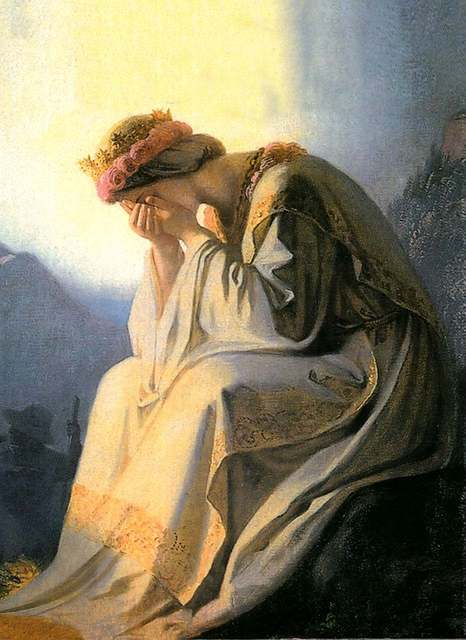
This is to say, she calls us to a different world than the tragic, materialistic and de-Christianised society that we know today.
And as it is a call that has gone largely unheeded, again and again Our Lady appears as weeping – weeping for the world.
But to go further with my pruning thought-experiment, even if one had little interest in the Blessed Virgin, but wanted simply a traditional Catholic perspective on Modernity, this great book would still yield great riches – for in a very valuable, engaging way it summarises key stages in the development of the Western World over the last five hundred years.
And it is a summary of history, which emerges as brutal and tragic. Many of us have become used, I think, to hearing with unspeakable horror the Holocaust perpetrated by the Nazis.
But as shuddering, as unutterable as the Shoah undoubtedly is, it seems to me we do not bear in our collective memories sufficiently so many other instances of modern horror.
These instances are not ignored here. We have grimly presented then, not only the immense carnage of the first World War, not only twenty million exterminated by the Soviets, but still more, including remembrance of the anything up to forty million murdered by Chinese Communism.
And before the immense tragedy of the twentieth century, Foley delves back through time for the causes of Our Lady´s grief. We have also then the grim miseries inflicted by nineteenth century capitalism; we have the genocide of the French Revolution; we have the wars that broke out in Europe as the ideal of Christendom was smashed …
A personal confession at this point. Reading Donal Anthony Foley as an erstwhile New Ager, I could not but help recall all my “Aquarian years” accentuating the positive in human nature. And I could not forget the New Age stereotype of Christianity I had once had as a religion obsessed with an angry God.
Although the equilibrium of divine justice is not absent from Foley´s pages, we are given a recurrent image that few New Agers ever register, few non-Catholics perhaps ever register. It is the image of Our Lady´s Tears.
Our Lady´s Tears, not wrathful, but weeping. For how frequently does Our Lady emerge in the different apparitions as pierced to the Heart. Indeed could we not see in the image of Her Immaculate Heart pierced by a sword, the heart of the Blessed Virgin stabbed for all of those who have lived – and died – by the sword (cf. Matthew xxvi.52)?
I write and as I write, the grim assessment of Shakespeare’s sword-wielding Macbeth floats back to memory:
To-morrow, and to-morrow, and to-morrow,
Creeps in this petty pace from day to day,
To the last syllable of recorded time;
And all our yesterdays have lighted fools
The way to dusty death. Out, out, brief candle!
Life’s but a walking shadow, a poor player,
That struts and frets his hour upon the stage,
And then is heard no more. It is a tale
Told by an idiot, full of sound and fury,
Signifying nothing.
In our dessicated materialistic age, how many indeed feel that this is a life signifying nothing? And how many know Our Lady’s Heart weeps for them?
Is Foley’s tale, then little but a tome of human tragedy with Our Lady doomed to look onwards as little but a baleful spectator, while we humans kill, maim and exploit each other? No, it is not. For as Aidan Nicolls OP says in his introduction: “Donal Foley has written a book with an extraordinary message.”
This is the message that can emerge as on ponders in toto the great Marian Apparitions. Foley has clearly been deeply pondering these in toto for many years …

Now the wonders of the Marian Apparitions are, of course, well known. The Miracle of the Sun beheld by untold thousands in Fatima was reported in the dailies the next day by the astonished secular journalists who had turned out to mock and sneer. And well documented are the miraculous cures of Lourdes …
Yet in writing these words, I find myself often not so much thinking of the spectacular, but of the wonder of “simple” prayer. Reading these stories of the Blessed Virgin again, how I confess I felt the need to pray my own Rosary with more fervour and dedication than I often manage.
And how many millions over the decades, will have felt as I have felt, as they stared into the wonder of Our Lady´s love? And what will have been the effects on humankind of all those untold rosaries and novenas and Salve Reginas?
One thing, which hit me in this regard, was Foley´s account of post-revolutionary Catholic France. This epoch holds a special place in my heart as I have written elsewhere – usually in terms of the Cult of the Sacred Heart.

Marian Apparitions in La Salette, Lourdes and Fatima
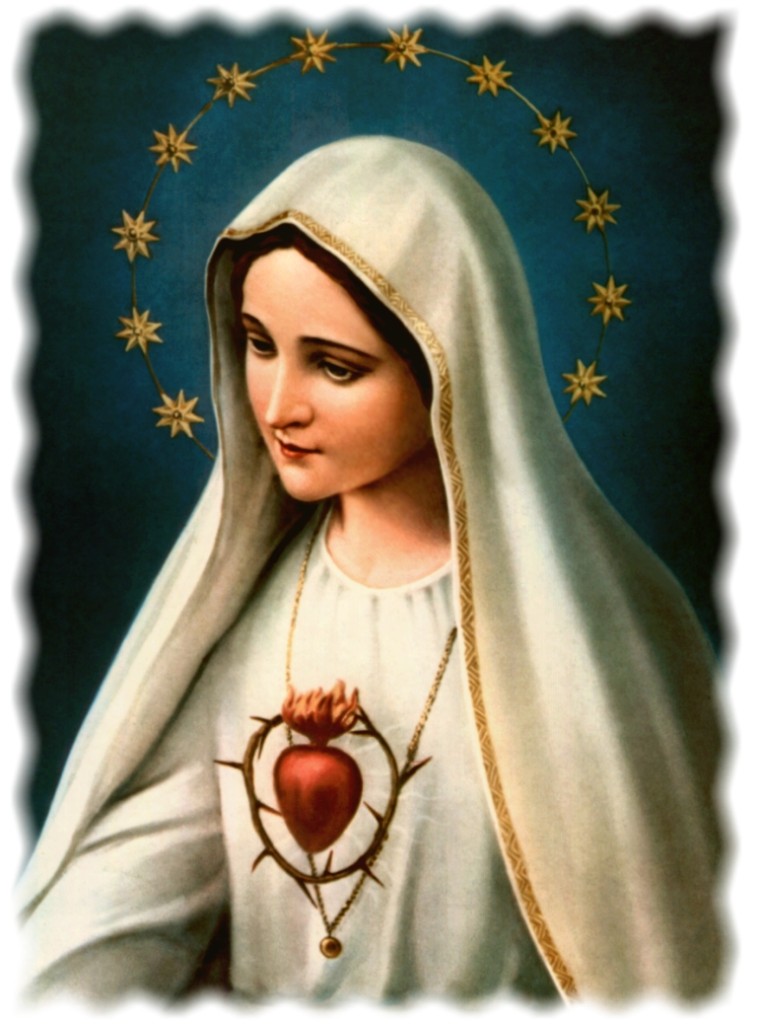
But Foley served to awaken me to how very much the nineteenth century French revival of Catholicism owed not only to the Sacred Heart but to the Marian Apparitions.
But Foley served to awaken me to how very much the nineteenth century French revival of Catholicism owed not only to the Sacred Heart but to the Marian Apparitions.
For in 1830 of course the Blessed Virgin appeared in the Rue du Bac, Paris with instructions for a Miraculous Medal to be struck and worn around the neck. And then she appeared again in La Salette and Lourdes urging penance. And in Pontmain with the expression of extreme sadness …
As someone whose life has been indelibly marked by French Catholicism, it is striking for me to note how fully five approved Apparitions happened on French soil (with two more in French Belgium). And it is my own experience that even in the hyper-secular France of today, one can still feel a special love among the French for Our Lady …
Whole books of course have been individually devoted to Fatima, Lourdes, La Salette and more. Thus Foley covers ground that has been well trod, giving accounts of the peasants, the Saints, the children who beheld the Blessed Virgin. But here the great apparitions are not simply summarized, but related to each other, to history and to the Bible with startling results. At least for myself …
The book also explores the continuing legacy of Fatima, examining the mission of the Portugese girl visionary Lucia, who went to the convent and who continued to be sought out by Popes, including Ven. John Paul II – who after his 1981 near-assassination at the Vatican thanked Our Lady of Fatima for sparing his life and proceeded to seek out the cloistered Lucia …
I find this too remarkable indeed. It was 1950 that Ven. Pius XII proclaimed the dogma of the Assumption and on 13 October 1951 in Fatima Cardinal Tedeschini told “how Pope Pius XII had himself seen a repetition of [the Miracle of the Sun] in Rome on four occasions during the previous year:
In the Vatican Gardens, the Holy Father looked towards the sun and there was renewed before his eyes the prodigy which years before, this same valley witnessed, on this same day. The solar disc surrounded by its halo – who can gaze on it? He could, during those four days; beneath the hand of Mary, he could observe the sun coming down, moving, convulsing, palpitating with life, transmitting, in a spectacle of celestial movements, silent, but eloquent messages to the Vicar of Christ.
Again, all of this is intertwined with portrayal of a decaying world order. One thing I felt particularly grateful for was Foley’s heartfelt awareness of the ravages of capitalism. Such social concern is not always evident in traditional Catholic authors, at least American ones.
As an American myself, may I be forgiven if I say that this unfortunate situation seems to me more an idiosyncrasy of American conditioning than anything. American conditioning, I sigh, as I too grew up with and was conditioned in my youth by American capitalist ideology.
In any event, Foley is clearly a European traditional Catholic and his sense for the tragedy of capitalism is marked. The book is rich in its wealth of suggestions pointing out the difference between traditional Catholic society and the less-traditional Protestant complex, which spawned and fostered capitalism. As the author writes:
The modern world and a new type of society were being born in the Protestant countries … particularly … England, where a combination of ideas from Protestantism, capitalism and democracy came together … Modern capitalism and the Industrial Revolution began their seemingly irresistible rise, first in England and afterwards in America …
That this new form of society arose in Protestant countries suggests a strong link between Protestantism, capitalism, industrialization and democracy [with] the secularization of economic, political and social ideals, with religion being marginalised and many of its functions being assumed by the State … by the middle of the seventeenth century economics had taken precedence over Christian traditions and ideals. By the eighteenth century economic liberalism, the notion that capitalism should have free reign [was bolstered by an English parliamentary] form of government, most easily controlled by rich oligarchies.
Yes here is yet another vein of gold in this book, which the author continues, citing for example the effects of the new economic thinkers such as Adam Smith and Thomas Malthus whose thinking served to develop “the capitalist mindset that had been building up for centuries.”

This is perhaps an unexpected treasure to be found in a book devoted to Marian Apparitions, but as I said at the outset, this book is filled with such treasure.
There really are so many kinds on offer here. I realise for example that I have not done any justice to the theme of Biblical typology, a strand I know deserves deeper contemplation.
Yet the various strands together have generated a torrent of insight and inspiration in me. And this is a review born from this immediate torrent. There being too much here to integrate on a first reading, I have begun my second and know that I shall be mining this book for years to come.
This book comes then with high recommendation, particularly for souls drawn to the key themes of this website and for souls parched in a desert of arid, secular capitalist materialism – that desert of soul and culture, which is now becoming a literal desert.
Because it is for those in search of a different world, that Our Lady has come and that her undoubted servant, Donal Anthony Foley has done this most remarkable work in illuminating her message for us …
Addendum: In addition to reviewing this book of nearly 400 pages, I will also note that there is far shorter, more condensed version of this published in a little booklet by the Catholic Truth Society. It cannot compete with the much richer and expanded version, but it remains very worthwhile if one wants a little taster of Foley’s book – which may then of course lead the reader to the full meal – and real deal.
Foreword for Monarchy by Roger Buck
Buying Books at Amazon Through These Links Gives Us a Commission. This Supports Our Apostolate. Thank You if You Can Help Us Like This!

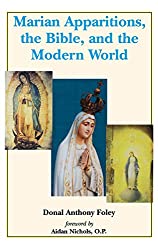
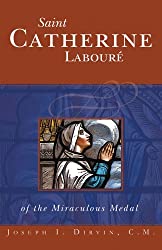
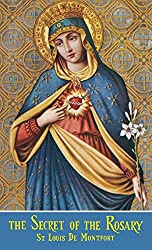





Comments
comments are currently closed
32 responses to “Marian Apparitions, the Bible and the Modern World—Donal Anthony Foley (Review)”
[…] Book Review: Marian Apparitions, the Bible and the Modern World … […]
[…] Link: https://corjesusacratissimum.org/2010/03/book-review-marian-apparitions-the-bible-and-the-modern-worl… […]
[…] introduction to the great French Marian apparitions, among others, I know of no better book than Donal Foley’s Marian Apparitions, the Bible and the Modern World, which I have reviewed here. This entry was posted in Webbursts and tagged Catholic France, Our Lady. Bookmark the permalink. […]
[…] the Redeemer, Meditations on the Tarot, Puritan’s Empire, Life of St M.M., This is the Faith, Marian Apparitions, The Secret of the Rosary, France and the Cult of the Sacred […]
[…] Review: The Portal of Hope Book Review: Meditations on the Tarot Book Review: Marian Apparitions Book Review: The Heart of the Redeemer This entry was posted in Roger's Weblog and tagged […]
[…] Review: The Portal of Hope Book Review: Meditations on the Tarot Book Review: Marian Apparitions Book Review: The Heart of the Redeemer /* This entry was posted in Roger's Weblog and tagged […]
[…] the Redeemer, Meditations on the Tarot, Puritan’s Empire, Life of St M.M., This is the Faith, Marian Apparitions, The Secret of the Rosary, France and the Cult of the Sacred Heart /* This entry was posted […]
[…] on the Tarot), (Puritan’s Empire), (Life of St Margaret Mary Alacoque), (This is the Faith), (Marian Apparitions), (The Secret of the Rosary), (France and the Cult of the Sacred Heart) (The Power and the Glory). […]
[…] on the Tarot), (Puritan’s Empire), (Life of St Margaret Mary Alacoque), (This is the Faith), (Marian Apparitions), (The Secret of the Rosary), (France and the Cult of the Sacred Heart) (The Power and the Glory). […]
[…] on the Tarot), (Puritan’s Empire), (Life of St Margaret Mary Alacoque), (This is the Faith), (Marian Apparitions), (The Secret of the Rosary), (France and the Cult of the Sacred Heart) (The Power and the Glory). […]
[…] UsKim's WeblogRoger's WeblogWebburstsReviewsIn MemoryArticlesUK StoreUS Store « Book Review: Marian Apparitions, the Bible and the Modern World – Donal Anthony Foley What IS this site, anyway? […]
[…] Glory) (Book Review: The Portal of the Mystery of Hope) (Book Review: Meditations on the Tarot) (Book Review: Marian Apparitions) (Book Review: The Heart of the […]
[…] information can also be found in the books advertised on this site. We particularly recommend Donal Foley’s Marian Apparitions – which is reviewed at length here (due to our great love of this […]
[…] however can also be found in the books advertised on this site. We particularly recommend Donal Foley’s Marian Apparitions – which is reviewed at length here (due to our great love of this […]
[…] is also covered in depth in Donal Foley’s book on Marian Apparitions, which I have reviewed here (as it is a key book for us at this website) – […]
[…] For that reason, I recommend Foley most highly (as I have done in my review here). […]
[…] with Donal Foley’s masterpiece (reviewed here), Francis Johnston’s comprehensive, well-written account of Fatima has been my most important […]
[…] Review: The Portal of Hope Book Review: Meditations on the Tarot Book Review: Marian Apparitions Book Review: The Heart of the Redeemer /* This entry was posted in Roger's Weblog and […]
[…] can also be found in different sections of our Amazon UK store here. Donal Foley’s superb Marian Apparitions is also reviewed here. This very fine and needed compendium also covers the Apparitions of the Rue du Bac to Saint […]
[…] Review: The Portal of Hope Book Review: Meditations on the Tarot Book Review: Marian Apparitions Book Review: The Heart of the […]
[…] Review: The Portal of Hope Book Review: Meditations on the Tarot Book Review: Marian Apparitions Book Review: The Heart of the […]
[…] Glory) (Book Review: The Portal of the Mystery of Hope) (Book Review: Meditations on the Tarot) (Book Review: Marian Apparitions) (Book Review: The Heart of the […]
[…] Review: The Portal of Hope Book Review: Meditations on the Tarot Book Review: Marian Apparitions Book Review: The Heart of the […]
[…] on the Tarot), (Puritan’s Empire), (Life of St Margaret Mary Alacoque), (This is the Faith), (Marian Apparitions), (The Secret of the Rosary), (France and the Cult of the Sacred […]
[…] would also like to point the reader to a very, very fine modern book on Marian Apparitions by Donal Foley. This is a most important volume for us and thus we have reviewed … […]
[…] We would also like to point the reader to a very, very fine modern book on Marian Apparitions by Donal Foley. This is a most important volume for us and thus we have reviewed… – RB. […]
[…] We would also like to point the reader to a very, very fine modern book on Marian Apparitions by Donal Foley. This is a most important volume for us and thus we have reviewed… – RB. […]
[…] We would also like to point the reader to a very, very fine modern book on Marian Apparitions by Donal Foley. This is a most important volume for us and thus we have reviewed… – RB. […]
[…] We would also like to point the reader to a very, very fine modern book on Marian Apparitions by Donal Foley. This is a most important volume for us and thus we have reviewed… – RB. […]
[…] We would also like to point the reader to a very, very fine modern book on Marian Apparitions by Donal Foley. This is a most important volume for us and thus we have reviewed… – RB. […]
[…] Review: The Portal of Hope Book Review: Meditations on the Tarot Book Review: Marian Apparitions Book Review: The Heart of the […]
[…] his great book, Marian Apparitions, the Bible, and the Modern World, Donal Foley clarifies this point, when he […]
[…] to Donal Foley, in his book, Marian Apparitions, the Bible, and the Modern World (also reviewed here), Bernadette herself […]
[…] Review: The Portal of Hope Book Review: Meditations on the Tarot Book Review: Marian Apparitions Book Review: The Heart of the Redeemer Book Review: This is the […]